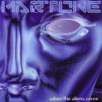Hello Guitar Nine readers. Dave Martone here, and I am going to talk to you about a nice tight low end. It's not what you think - but it is in relation to your mixes!
The main thing that you need to worry about is the low end that comes from your bass guitar and kick drum, and to watch that the guitars do not clutter this area of the mix.
Firstly, a high pass filter is in need for all guitars. What this means is a filter that cuts anything below 75Hz away. You can find these on mixing boards at the top where the pre-amp gain stage is, or on your mic pre amp unit, if it has it. Average settings are 50, 75 and 100Hz. 100Hz is too much and 50Hz is not enough. You will see why in a moment.
Firstly the bass guitar should be boosted at 60Hz by approximately 5dB, and a cut should be at 50Hz by about 7dB. You should also roll off the high end at 8kHz. There is no sonic information up there that is needed for the mix. I use the Waves plug in for this.
(Please note that the graphical representation is not the curve that I am speaking of)

The kick drum on the other hand should be boosted at 50Hz by about 7dB. This fills the hole that you have left for it by taking out that frequency on the bass guitar. You should also cut 60Hz by approx 5-6dB for the same reason. Also roll off at 8kHz since there is no information up there also. You might want to boost around 4150Hz to add some snap to the kick drum.
Once these settings are done you need to compress them with a plug in compressor or an outboard unit. I use the Waves RCL plug-in unit.

This unit is great because it has presets under the load button. For the bass, select "electric bass" to start. Move the threshold button slider to approximately -16 and raise the gain to approximately 4. Please watch that you do not clip the output. The same goes for the kick drum. Select the setting drums under load, and use approximately the same settings.
The compressor helps smooth out the signal and make it more constant. However if you are looking for a more dynamic mix you should use a number closer to 0 for the threshold. You might start with -8 instead.
The last piece is a multi-band limiter. Db -audioware makes a very cool plug in.

If you've heard of the benefits of multi band processing, but don't understand how it works, then give dB-M a try. The graphical interface shows you exactly what the multi band algorithm is doing, in real time.
dB-M has a wide range of applications. As well as being a highly effective loudness maximizer, it can also tame the volume of a loud kick drum in the final mix without affecting the tonal quality of the mids and highs; even the volume of a bass guitar in the mix while leaving the vocals untouched; compress the lows and mids of a guitar track while leaving the sparkling highs intact; etc. And because dB-M uses proprietary intelligent lookahead algorithms, you will never hear distortion, even when using extreme settings! Hopefully some of this info will help you achieve a nice tight low end. If all else fails, go to the gym and try some squats!
May the tone be with you.
David Martone is a guitarist from Vancouver, Canada who has released seven solo CDs which showcase his musical diversity and brilliant guitarmanship.
His 2007 CD is entitled "When The Aliens Come", which features a progressive sound incorporating jazz, rock, fusion and metal influences.
